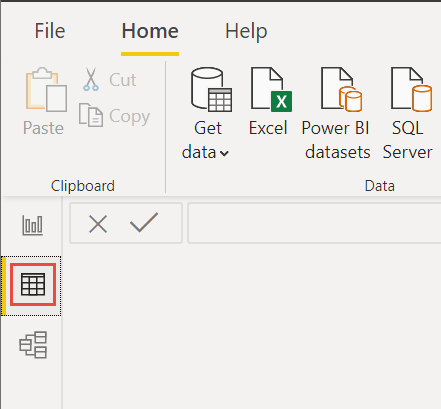
What I see happening a lot, is that Power BI is sometimes almost used as an ETL tool. Unsustainable processes and new solutions This might lead into a possible data leak. Possibly the data send over mail is confidential and strictly secured, but still sent to users who does not have sufficient privileges to view this data. As Power BI admin you do not have any influence on that and even worse, you don’t even know that this is happening.

Potentially this user can send it over mail or in any other possible way to others. Imagine that you have RLS enabled on your dataset, but one user decides to export the data to an Excel file. Below I highlight a few of them in more detail. There are multiple reasons you must take into account in order to decide if you want to disable the Export to Excel functionality. This setting is not applicable to the summarized data options. The toggle to disable Export to Excel only includes the functionality to Export underlying data (raw data) used to generate the visuals. Toggling off the Export Data functionality has big implications and results in a whole bunch of limitations.

A feature which is very Powerful and much used. The last mentioned also includes building new Power BI reports in Power BI desktop on top of an existing Power BI dataset. Both have the same setup for permissions as described above.Įxport data, applies to all different capabilities to (re-)use data outside of Power BI, including Analyze in Excel and Power BI Service Live Connect features. First of all is the Export data in general and second the Export to Excel as a specific setting. Disable for the entire organization, except specific security groups.īesides the various permissions you can set, there are also two different options to disable this functionality.Enable for the entire organization, except specific security groups.The Power BI admin portal allows the following options: These settings are not simply on or off but can also be limited to a specific group of people. In the previous part it was already shortly mentioned, Power BI Service admins can change the settings to allow data exports on tenant level. Why you should consider disabling Export to Excel In the end the Power BI Service admin decides what options are possible to use. No matter what settings are applied in Power BI desktop, the tenant settings will overrule this. This is managed in dataset settings, but only changeable in Power BI desktop. Second, as a dataset owner you can decide if you allow your users to export the data. With that, nobody will be able to export the data. First, Power BI Service admins can disable this functionality on tenant level. The export functionality can be disabled on several levels. Underlying Data in Excel format (max 150k rows).Summarized Data in CSV format (max 30k rows).Summarized Data in Excel format (max 150k rows).The difference is mainly raw data or only data as visible in the chart where you clicked the export button.Īs export, the following options are available: If you have all export functionalities enabled, users can both export underlying data and summarized data. The export option can be used by clicking the ellipsis on the right top of a visual (if the visual header is enabled). For example, sending the data to others via mail, transforming or manipulating the data, start building new reports based on the Excel file and many other things. After exporting, they can do whatever they want. It allows report users to export the data from a specific visual in the report to an editable Excel file. Export to ExcelĮxport to Excel is a feature in Excel which is available in Power BI for a very long time. Though, some of the content is overlapping. I also know that Reza Rad wrote a similar blog post earlier this year about the same topic, but I try to shine a different light on it, more from a Power BI Service admin perspective. I picked this as a first topic, based on recent experiences at a client, which resulted in interesting and challenging conversations with Power BI users across the organization.

Let’s kick off with a very often used feature in Power BI, but we all should have our doubts, Export to Excel. It all sounds very much blah blah blah… In some way we are all dealing with governance, from a user- or admin perspective.

It enables the organization in managing risks and ensure that the activities done are in line with the business, organization, governance and standards. New to this topic? Governance can more less be described the guidelines and settings on a higher framework level that defines what you can and what you cannot do with a specific product or service. Governance is a new topic for me to write about and less technical than I’m used to. Would that be interesting for you? #PowerBI #Governance One thing that popped-up in mind was more on the governance side of Power BI.


 0 kommentar(er)
0 kommentar(er)
